sierraclub.org - sierra magazine - march/april 2013 - enjoy: spring gleaning
Grow Your Own Herbs | Trendsetter: Esperanza Spalding | Let it Blow
SPRING GLEANING
Herbs can be lovely—but if you're looking to buy the organic, locally sourced kind, prepare to leaf out a lot of green. We propose a fun, economical alternative: Grow your own, either indoors or out. These are some of the best types to harvest at home. —Avital Andrews
MINT
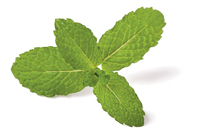
Many experts recommend growing mint but warn against letting it run amok—best to keep it in pots. Elise Bauer, who runs Simply Recipes, says she prefers spearmint because it's so easy to grow and maintain. "Once it's established," Bauer says of the hardy herb, "you never have to plant it again. It keeps coming back every year." Mint is happy in shade, so she plants it along the side of her house, which also prevents bugs from coming in—they hate the stuff. And its culinary uses abound: Slice mint leaves into a chiffonade, mix sprigs with spring peas, or steep them in tea or lemonade. Also: Juleps! Mojitos!
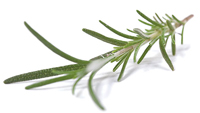
ROSEMARY
Isaac Eliaz, an integrative doctor and herbalist at Northern California's Amitabha Clinic, appreciates rosemary for its rich folkloric history. "Its elegant, needle-like leaves impart a delightful piney flavor to complement meats and savory, garlicky dishes," he says. Eliaz adds that you can steep it in hot water for 10 minutes to make a soothing tea. Rosemary is an easy but slow grower and thrives year-round. Mature plants like
full sun and well-drained soil.
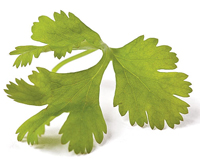
CILANTRO
Cilantro is a love-it-or-hate-it herb, but Christy Wilhelmi, the founder of the gardening website Gardenerd, decidedly loves it, in anything from Indian dishes like chana masala to Asian stir-fries to south-of-the-border creations—especially guacamole and green chili. "Its fresh flavor is more potent when you grow it yourself, and you can grind the seeds for coriander," she says.
Cilantro grows best in cool weather and, in most places, can be planted from February through May for a summer harvest. In hotter areas, though,
cilantro grows best in fall. Collect as needed, Wilhelmi advises, cutting the outside stems and keeping the soil moist but not soggy. If left to flower, cilantro should reseed itself each year.
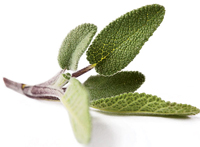
SAGE
"Garden sage, Salvia officinalis, is an herb everyone should have," says Tania Gybels, a landscape designer and horticulturist in Los Angeles. "It goes with all poultry dishes, and the leaves can be simply flour-fried in organic olive oil and served as a light appetizer. Pair it with a California merlot, fresh figs, and locally made chevre, and it's always very well received." The plant's purple flowers make a nice addition to a fragrance garden, and it's perennial, so in warm zones you can plant it any time of year—though it does need full sunlight and good drainage.
THYME
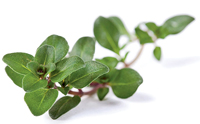
Linda West Eckhardt, a James Beard Award-winning cookbook author and the founder of the website Everybody Eats News, is a fan of woolly thyme. "It grows like a weed," she says, "and makes an attractive ground cover that's wonderful in many recipes. Plus, you simply can't kill it." This drought-tolerant herb is commonly used in Mediterranean dishes and in bouquets garnis for soups. Eckhardt recommends planting it in spring in a full-sun location with plenty of room to spread. Water sparingly, and snip off flowers to get more leaves.
BASIL
John Thompson loves edible flora so much that he co-invented the AeroGarden, hydroponic device that helps plants grow indoors. Within four months, he produced $150 worth of basil at home. "I grow a lot of different herbs," says the lifelong gardener and cook, "but Genovese basil is always on hand in large amounts." The hot-weather plant, which germinates reliably and grows fast, shouldn't go out before the last chance of frost—but you can start seeds indoors a month ahead. Once the weather warms, transplant them to a very sunny spot. By mid-July, your basil stalks should be big and prolific. Harvest early and often, and cut flowers off to produce more leaves. Basil goes well in just about anything, rounding out sauces, soups, salads—and, as Thompson says, "it makes pizza taste healthy and alive."
NASTURTIUMS
Few herbs are easier to grow than nasturtiums, according to Maggie Lawrence, a culinary farmer at North Carolina's Umstead Hotel). "They actually thrive on neglect," she says, "and benefit from little to no soil amendments." Plus, a single plant is enough to supply a bounty. Seeds grow best after an overnight soaking in late spring. Keep the soil damp until germination, then lightly mulch around the seedling and water during dry periods for about 20 days, at which point you can start snipping leaves. Flowering takes about two months and lasts through summer and fall. Layer the bright-green leaves in sandwiches or blend them into soups, sauces, and dressings. The beautiful, edible blossoms have a radishlike flavor and serve as colorful garnishes. For "poor man's capers," pickle the seed pods.
PARSLEY
When Briscoe White, who owns the online plant shop Growers Exchange, was asked to name his favorite herb, he protested, "That's like asking which child I love best!" He eventually settled on Italian parsley because it's "delicious to eat and very easy to grow." Its gentle flavor enhances most cuisines, though it's especially great in soups, stews, and egg dishes. The lush plant grows best in 60-to-65-degree weather, so in spring, plant parsley in well-drained soil and full sun; during fall and winter, keep it in a pot by a sunny window. Harvest the outer leaves, leaving the central rosette to grow. White reminds us that the best way to eat parsley is fresh: "That little sprig used as a garnish may well be the most nutritious thing on the plate."
CHAMOMILE
"Chamomile just screams -- or maybe I should say, 'softly and lovingly whispers' -- relaxation," says Zoe Kissam, a clinical herbalist for the tea company Traditional Medicinals. The Matricaria recutita species is easy to grow -- plant it in early spring in full sun or partial shade to yield an apple-and-honey-flavored botanical that's said to be an antidote to stress-caused physical problems. Harvest the flower itself, Kissam advises, as it's the blossom that imbues those healing properties. Mixed into tea, infused into honey, or planted on a lawn, chamomile enhances every herb garden.
Trendsetter: Esperanza Spalding
Photos: Lori Eanes (5); special thanks to Michael and Amanda Fox for the thyme